As we had reported minutes after the official announcement, this year’s winners of the Praemium Imperiale, the “Nobel” in the arts, are William Kentridge (Johannesburg, 1955), who wins the prize for painting, Mona Hatoum (Beirut, 1952), who wins the prize for sculpture, the duo of Tod Williams (Detroit, 1943) and Billie Tsien (Ithaca, New York, 1949) to whom the architecture prize goes, Anne-Sophie Mutter (Rheinfelden, 1963), who gets the music prize, and BandÅ TamasaburÅ (Tokyo, 1950), victorious in the theater/cinema category. Issue number XXXI of the Praemium Imperiale also honors five personalities who have distinguished themselves in the field of the arts for this 2019 edition; it also recognizes an award for young artists, the Grant for Young Artists, which for this edition goes to the Démos project, which focuses on music education.
The award ceremony will be held Oct. 16 at the Meiji Kinenkan architectural complex in Tokyo in the presence of Prince Hitachi, uncle of the Emperor of Japan and known for his philanthropic activities. Prince Hitachi is Honorary Patron of the Japan Art Association, the body that awards the Praemium Imperale, founded on the aspiration of Prince Takamatsu (Tokyo, 1905 - 1987) that Japan would promote world peace through the arts. And it is precisely the aegis of the Japanese Imperial Household that is one of the factors (along with the rigor in the selection of nominees and the final choice of winners) of the authority enjoyed worldwide by this award, whose international prestige in the arts is equal to that of the Nobel Prizes in science.
Nominations for the annual awards are proposed by the International Councilors of the Japan Art Association, who each chair the Nominations Committees in their own countries. The final choice of winners, on the other hand, is made by five Japan Art Association Selection Committees, one for each prize category: painting, sculpture, architecture, music, and theater/cinema. A condition of the award is the presence of the artists at the award ceremony in Tokyo. International Councilors include prominent institutional, political, and cultural figures: Lamberto Dini, Klaus-Dieter Lehmann, Christopher Patten, Jean-Pierre Raffarin, and Caroline Kennedy, who has the position from this edition of the prize, having been appointed in 2018 following the retirement of Ambassador Luers. Honorary Councilors are Jacques Chirac, William H. Luers, David Rockefeller Jr., François Pinault, and Yasuhiro Nakasone, who, having turned 100, left office at the end of 2018.
The winners of this thirty-first edition will join the 154 artists already honored with the prize, including Claudio Abbado, Gae Aulenti, Ingmar Bergman, Luciano Berio, Cecco Bonanotte, Leonard Bernstein, Peter Brook, Anthony Caro, Enrico Castellani, Christo and Jeanne-Claude, Federico Fellini, Dietrich Fischer-Dieskau, Norman Foster, Frank Gehry, Jean-Luc Godard, David Hockney, and Willem de Kooning, Akira Kurosawa, Wolfgang Laib, Sophia Loren, Umberto Mastroianni, Mario Merz, Issey Miyake, Riccardo Muti, Giuseppe Penone, Renzo Piano, Michelangelo Pistoletto, Maya Plisetskaya, Maurizio Pollini, Arnaldo Pomodoro, Robert Rauschenberg, Mstislav Rostropovich, Ravi Shankar, Mitsuko Uchida, and Giuliano Vangi.
Let’s take a closer look at who the protagonists of this edition of the prize are, and the motivations that led the international jury to declare them winners.
William Kentridge (Johannesburg, 1943). Winner of the painting prize.
Rationale: William Kentridge invented “moving drawings,” which are animated films made by filming static images, redrawing them and then filming them again, over and over, thus creating an unparalleled universe. He created new kinds of artisticmedia based on drawings, integrating sketches with videos, installations, sculptures, and later combining them to develop theatrical and operatic works. He has always opposed tyranny, and his intellectual quest to identify the evils ofapartheid and colonialism runs through all his works. For this reason he is highly regarded by many people.
William Kentridge is an extraordinary visual artist who uses drawing, film, performance, music and sculpture to investigate the ideas and conventions of our world, search for its hidden truths and dismantle its false certainties.
The artist was born into a Jewish family that immigrated to South Africa. His parents were lawyers, close to activists and themselves engaged in the struggle againstapartheid. The environment in which he grew up, although he later followed a different path than his parents and grandparents, who were also lawyers, led him to be, as he explains, “able to understand the world with arguments other than those based on law,” enabling him to “build an ethical relationship with society.”
After earning a degree in political science in Johannesburg, he studied theater in Paris and for a while tried to become an actor. Eventually, however, now in his 30s, he returned to South Africa where he began his artistic career with “moving drawings.” This technique allows partial additions and erasures to be made to a series of charcoal drawings that are filmed, one frame at a time, and linked together to form a video. This style of animation, while simple compared to more modern and technically sophisticated styles, captures the depth of time and possesses an expressiveness filled with hidden meanings. Among the works in the Nine Drawings for Projection series (1989 - ongoing), which gave Kentridge worldwide acclaim, Felix in Exile can be considered of the utmost importance. The work was created in 1994, the year the first democratic elections were held in South Africa. Influences of German expressionism and Dadaism are echoed in it, with a dramatic scene of dead bodies disappearing into the landscape. “Although I knew that the election would be followed by celebrations, I could not avoid thinking about how the memory of those who had died, of their sacrifice, would fade away. Likewise, the landscape would only cover up what had happened in the past. In this sense, I felt that landscape and memory are very similar.”
Felix in Exile brings to the surface the pain of a dark history that has dissolved into the landscape until it is no longer visible, and yet reminds us that human vision and memory are ephemeral and uncertain.
Themes of change, memory, and time are recurrent in Kentridge’s production, and his ideas migrate from one type of work to another. The artist is creating an increasingly complex and multidisciplinary art that involves a multi-layered fusion of sound, music, dance and film, in which silhouettes and figures in procession play a key role. The epic work The Head and the Load (2018), which examines the role of African soldiers in World War I, has been universally acclaimed. These works reveal the artist’s opposition to dictatorial regimes and colonialism and an intellectual exploration of the pathology behind them.
Creative and witty, this Johannesburg-based artist is in demand worldwide. His varied output resonates widely, and after 40 years, he is still searching for a truer world.
Kentridge was awarded the Kyoto Prize in Japan in 2010, the Order of Arts and Letters in France in 2013, and the Princess of Asturias Prize in Spain in 2017.
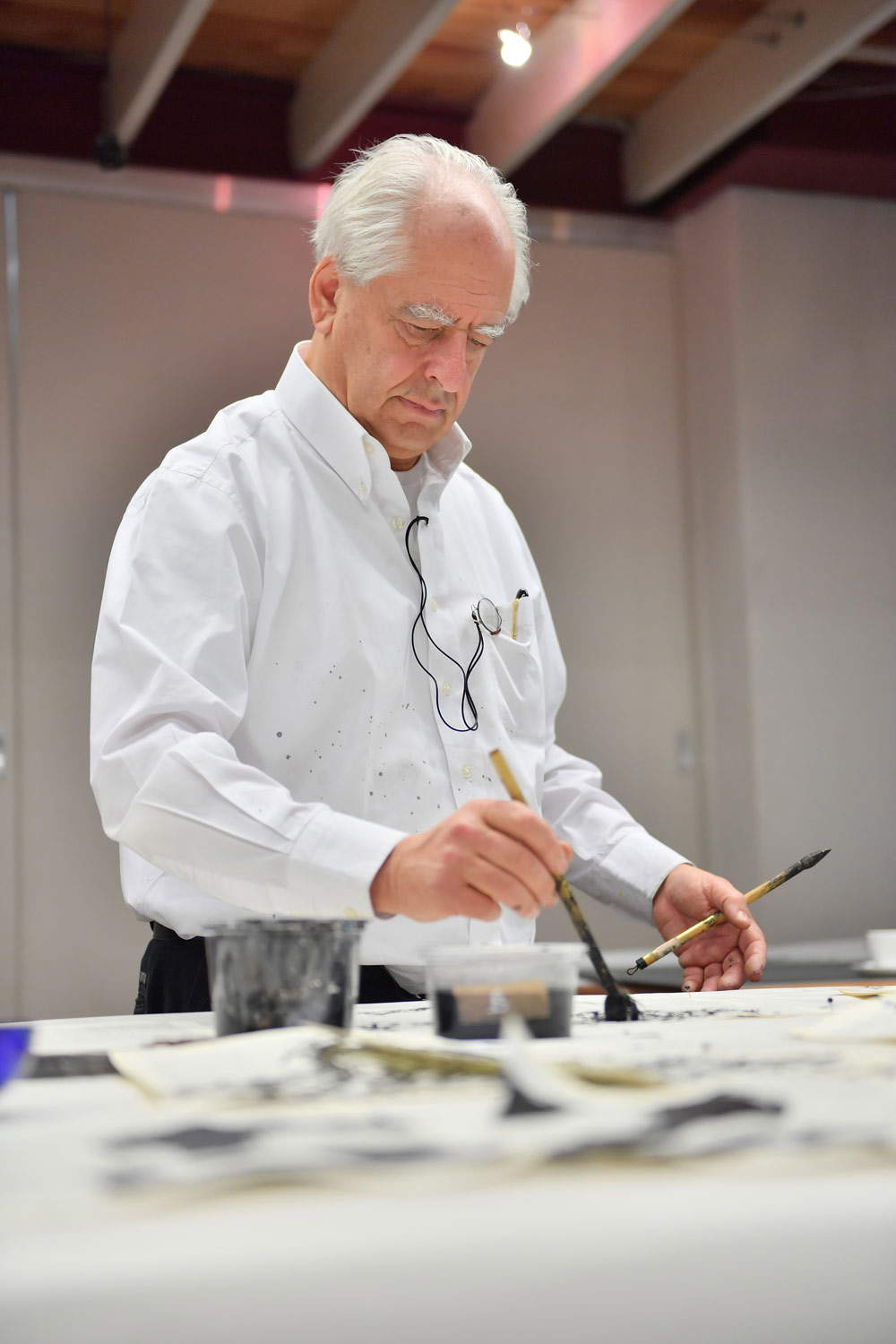 |
| William Kentridge in his studio in Johannesburg. Ph. Credit © The Japan Art Association / The Sankei Shimbun |
Mona Hatoum (Beirut, 1952). Winner of the sculpture award.
Rationale: Mona Hatoum is an artist who has experienced the refugee condition firsthand and has often shown the agony and pain of refugees in her artworks, as well as confronting social contradictions such as political repression and gender issues. She expresses her radical and almost critical awareness of issues with great delicacy. Her rich imagination and artistic achievements deserve attention, and the sense of urgency present in her works gives them a strong sense of reality. Also highly appreciated is the way she has continued to stimulate the contemporary art scene.
Mona Hatoum is a British Palestinian artist whose poetic and political output is realized in a range of diverse and often unconventional media, such as installation, sculpture, video, photography, and works on paper.
Her family of origin was Palestinian but lived in exile in Beirut, Lebanon. In 1975 the artist was in London for a short stay when the outbreak of the Lebanese civil war prevented her from returning to Beirut.
Settling in London, she decided to realize a dream she had long nurtured - to become an artist - by studying fine arts from 1975 to 1981 at the Byam Shaw School of Art and the Slade School of Fine Art. Initially she worked in video and performance, later extending her creations to installations and large-scale works.
One of his early works, Measures of Distance (1988), was a singularly autobiographical video containing a conversation between the artist and his mother, in which he revealed the pain of separation and the effect of distance. Another of his early works, Corps étranger (1994), grew out of his critical awareness of the proliferation of surveillance cameras in London. The artist projects the results of an endoscopy, filming her internal organs, onto the bottom of a cylindrical structure. The viewer thus becomes a voyeur inside the artist’s body.
Using cartography to explore instability and precariousness in today’s political landscape, Hatoum has made a series of maps of the world, from the one created with Nablus soap and beads, Present Tense (1996), to Map (1999), a map made with small glass spheres, to Hot Spot (2006-2013), a huge glowing globe with ominous red neon.
Over the years, Hatoum has developed a language in which familiar, domestic, everyday objects are often transformed into something foreign, threatening and dangerous. “I’m interested in,” he explains “’the uncanny.’ When a perfectly familiar situation suddenly looks strange because it is associated with some kind of traumatic event, this creates feelings of anxiety, unease and terror.”
In 2017, she was awarded the 10th Hiroshima Art Prize, and the visit to Japan that followed was the inspiration for her important work Remains of the Day, in which ghostly remnants of burned furniture recall the immense devastation caused by the atomic bomb, while simultaneously echoing the effects of violence and war or today’s ecological disasters.
His works often reflect his hybrid and diverse background. “My roots,” he says, “are in the Middle East. I have a different view of the world. I have had a very eclectic and diverse cultural experience.”
Mona Hatoum has become one of the most important artists globally, and her works can be found in all major collections. In 2011 she was awarded the Joan Miró Prize. A major exhibition dedicated to her work was held at the Centre Pompidou in Paris, Tate Modern in London, and Kiasma in Helsinki from 2015 to 2017.
She currently lives in London and spends her days, as she puts it, “working, working, working.”
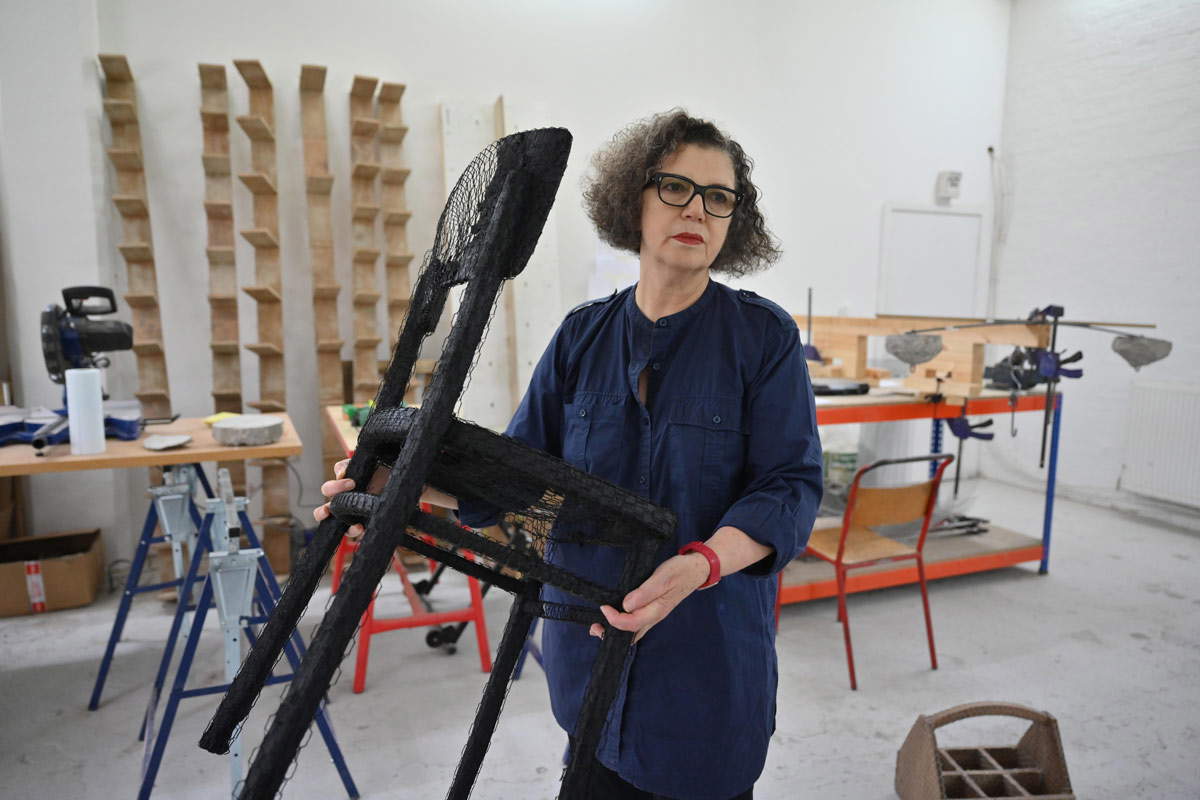 |
| Mona Hatoum in her studio in London. Ph. Credit © The Japan Art Association / The Sankei Shimbun |
Tod Williams (Detroit, 1943) and Billie Tsien (Ithaca, New York, 1949). Winners of the architecture award.
Rationale: Tod Williams & Billie Tsien have devoted themselves primarily to non-commercial architecture, in spaces such as institutes, museums, schools, etc., describing their design work as “a baby trying to learn to walk.” They meticulously analyze materials and forms, taking enough time to allow ideas to develop. They also value “hand-drawn designs” and “slowness,” versus working methodologies that are too fast. It is highly appreciated how they create delicate and soothing spaces with designs that “taste like craftsmanship.”
Tod Williams and Billie Tsien have been working together since 1977 and live in New York City, where in 1986 they founded the renowned Tod Williams Billie Tsien Architects, which caters primarily to public and institutional clients such as schools, museums, and nonprofits.
Both are convinced that architecture is an act of “profound optimism” and seek to work for institutions that share this view. Their aspiration as architects is to “put themselves at the service” of their clients by bringing to life projects that embody their mission and values. “We start with a thorough examination of the client,” Williams explains. “Our job,” Tsien continues, “is to try to understand what forms the essence of things. We can’t work on a project if we don’t share its values.”
Their studio carefully explores the potential of materials, textures, light and other elements so that they reflect the specific purpose and location of each project. Wherever possible they incorporate craftsmanship, thus giving visibility to all those who contribute their labor, intellectual or manual, to the creation of a project. “People,” Tsien explains, “say the structures we design are ’like people.’ We try to make sure that our buildings are imbued with a sense of ’belonging,’ plus we want to inspire in those who enter them a feeling of awe.”
Williams and Tsien have different personalities and cultural backgrounds. Williams is typically from the Mid-West: hard-working, with boundless energy. Tsien, a Chinese American born in Ithaca, New York State, describes herself as American culture and Chinese temperament. She can often be found immersed in reading a novel to expand her worldview. “If I bring ripples and rough weather, she brings sunshine,” Williams says. These differences are balanced by the mutual respect, integrity and collaborative spirit reflected in their approach to design. “We get into arguments,” Williams says with a smile, “but we enjoy working together. If we worked alone, the quality of our work would be cut in half.”
The Barnes Foundation (2012) provides an example of the philosophy and approach that characterizes their design practice. Since 1925, Dr. Albert Barnes’ art collection, containing important works by famous Impressionists such as Renoir, Cézanne, and Matisse, was housed on his property in suburban Philadelphia. The Foundation, limited by financial constraints, concerned about the preservation of the works and its isolated situation in an affluent suburb, needed a more spacious and modern facility that would allow for a greater influx of visitors. However, Barnes had expressed in his will that he wanted the collection to be displayed in its original location-a request that presented an extraordinary challenge to the architects.
Williams and Tsien masterfully melded integral elements of the original building with the necessary space for the public, staff, and programming. Their design is based on the concept “Gallery in a Garden, Garden in a Gallery” and reflects the Foundation’s mission, architectural past and legacy for the future.
Arriving from the street, upon entering the Barnes Foundation, one proceeds through a bucolic garden in which the pre-existing landscape is echoed. The galleries have been meticulously reproduced to reflect the condition in which Dr. Barnes left them. The inclusion of a central atrium flooded with natural light from above creates a flexible space for exhibitions and events. A dedicated gallery for temporary exhibitions, an auditorium and a library further diversify the Foundation’s offerings making it a holistic facility dedicated to arts education for the 21st century.
Williams and Tsien’s works are primarily located in the United States. These include the Neurosciences Institute (1995) in California, theAmerican Folk Art Museum (2001) and the LeFrak Center at Lakeside (2013) in New York City, buildings that have won major awards.
In 2012 Tod Williams Billie Tsien Architects completed its first overseas project, theAsia Society Hong Kong Center, followed in 2014 by the Tata Consultancy Services Banyan Park in Mumbai, India.
In 2016, former President Barack Obama and Michelle Obama announced that Williams and Tsien would have the honor of designing theObama Presidential Center in Chicago.
Whatever the complexity or size of a project, their values remain intact and their goal of leaving positive marks on Earth by transcending expectations is as solid as ever.
 |
| Tod Williams and Billie Tsien. Ph. Credit © The Japan Art Association / The Sankei Shimbun |
Anne-Sophie Mutter (Rheinfelden, 1963). Winner of the music award.
Rationale: Anne-Sophie Mutter is held in the highest esteem because she has all the gifts required of a musician: splendid and varied musical tones and colors, perfect technique, excellent expressions and rich musicality. She is also famous for her profound knowledge of contemporary music. As the “Queen of the Violin,” her recent activities have seen her success grow further. She has received a Grammy four times and was awarded the prestigious Polar Music Prize this year. She is also highly regarded for her commitment to helping young musicians around the world and for her support of various types of charitable activities.
German musician Anne-Sophie Mutter is considered one of the greatest contemporary violinists. Her musical skills and her refined and unique vibrato technique are unquestionable, as are her excellent expressive skills, musical knowledge, and wide-ranging love of music.
From childhood it was clear that hers was a precocious talent, and when she was only thirteen years old she was invited by the celebrated conductor Herbert von Karajan to play with the Berlin Philharmonic, an orchestra with which she continues to collaborate to this day. “He said that I had in fact been the only violin soloist,” she recalls, “with whom he had worked since 1978. I’m deeply honored, I found that a wonderful compliment.”
Anne-Sophie Mutter made her debut in Japan with Maestro von Karajan in 1981 and went on to work with many of the world’s greatest conductors, such as Seiji Ozawa, Zubin Mehta and Daniel Barenboim. She can boast a vast and varied repertoire that often contains works written for her by leading contemporary composers, such as Krzysztof Penderecki and Sofia Gubaidulina. This year she will be on tour and will perform film scores that have been arranged especially for her by composer John Williams.
“It is the noble task of us musicians to educate the audience, to lead them on this journey to a different universe,” she says, “because we need to broaden our understanding of music, both those who play and those who listen.” At the age of 34, she started a foundation to discover and support new talent. This has since morphed into the Anne-Sophie Mutter Foundation, which provides music lessons and scholarships as well as the unique opportunity to perform with Mutter herself. The purpose of the foundation is also to help these young musicians become familiar with the life of a professional musician, introducing them to a wider audience. In spring 2011, she also launched Mutter’s Virtuosi project: this ensemble, under her artistic direction, is composed of those who have or have had a scholarship from the Anne-Sophie Mutter Foundation, as well as other selected young musicians. In this way Anne-Sophie Mutter ensures that what she herself received from great mentors continues to be passed on to the next generation. “Karajan made me realize,” she recalls, “the importance of passing on to future generations what we had received from our great masters.”
On their tours of Europe, North America and Asia, the Mutter’s Virtuosi always present new works to audiences; charity concerts are also on the program for each tour. Their next tour this fall will take them to South America. Anne-Sophie Mutter has given benefit concerts to help victims of the Great East Japan Earthquake and Tidal Wave of 2011 and for Syrian refugees.
A winner of numerous awards, she was awarded the title of Commander of the Order of Arts and Letters by the French government in 2017 and received the prestigious Polar Music Prize in 2019.
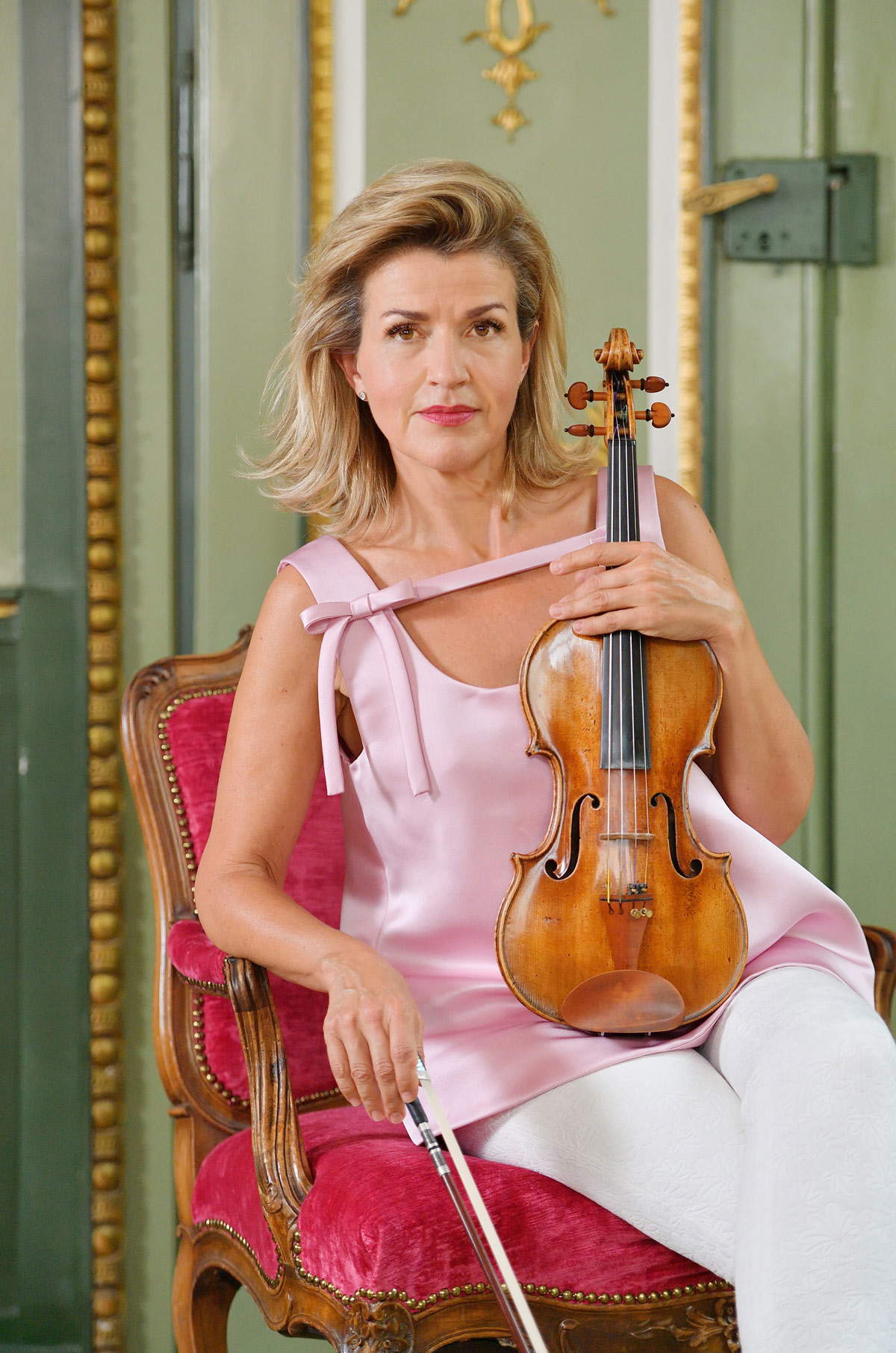 |
| Anne-Sophie Mutter. Ph. Credit © The Japan Art Association / The Sankei Shimbun |
BandÅ TamasaburÅ (Tokyo, 1950). Winner of the theater/cinema award.
Rationale: BandÅ TamasaburÅ, the most prominent onnagata (an actor who plays female roles) in contemporary kabuki theater , is celebrated for his great beauty, his ability to express the spirit of the character he plays, and his polished performances. He is also famous in the field of dance, in which he brings worlds of exceptional elegance to life. BandÅ has inspired artists overseas and can boast numerous international collaborations. He is also an artist of many talents, working not only as an actor but also as a theater and film director. BandÅ TamasaburÅ is truly an actor, creator, and artist of exceptional and uncommon talent, and he enjoys the highest prestige both in Japan and abroad.
In the world of the Japanese tradition of kabuki theater,BandÅ TamasaburÅ is already a legend and is considered one of the greatest omnagata actors. As is the case in traditional theater in other countries, kabuki is performed entirely by men, and some actors specialize in playing female roles: the onnagata. BandÅ is famous and much admired for his incredible ability to portray female beauty and express the spirit of the character he plays.
In 1957, in keeping with kabuki tradition, he made his stage debut under the name BandÅ Kinoji, but in 1964 he became BandÅ TamasaburÅ V, receiving the prestigious stage name from his adoptive father Morita Kan’ya XIV, who was BandÅ TamasaburÅ IV.
At the age of 19, BandÅ won the role of Princess Shiranui in Yukio Mishima’s adaptation of the heroic epic Chinsetsu Yumiharizuki.
Over the years BandÅ has played all the major onnagata roles that embody the wonder and charm of kabuki: characters such as the faithful nanny Masaoka in Meiboku Sendai Hagi (Precious Incense and Autumn Flowers of Sendai), the graceful courtesan Akoya in Dan no Ura Kabuto Gunki(for a long time, BandÅ was the only actor who could play this role) andYatsuhashi, a femme fatale in Kagotsurube Sato no Eizame (The Bewitched Sword). He is also famous for his dance performances, which form an integral part of an onnagata of kabuki theater, and his ability to create worlds of special beauty through dance in such works as Kyoganoko Musume Dojoji (The Maiden at Dojoji Temple) and Sagi Musume (The Heron Maiden) is renowned.
In Japan, the popularity of BandÅ TamasaburÅ and his partners on stage transcends the world of kabuki. In the 1870s, in particular, BandÅ initiated two celebrated and enduring artistic partnerships: one with Ichikawa Danjuro XII, known at the time as Ichikawa Ebizo, and the other with Kataoka Nizaemon, known at the time as Kataoka Takao. Such was the popularity of these artistic couples that they became known throughout Japan as Ebi-Tama and Taka-Tama. Their vibrant and refined performances made them much loved by audiences, whether they were fans of kabuki theater or not.
BandÅ’s creativity did not stop with kabuki . Even as a child she played important heroines of non-kabuki theater, taking on the roles of Desdemona in Shakespeare’sOthello and those of Tomihime in Izumi Kyoka’s Japanese horror classic Tenshu Monogatari.
Revealing a creative and constantly research-oriented mind, she has expanded the scope of her activity to include international and non-kabuki works , acting in Okinawa’s Kumiodori and the Chinese opera Kunqu as onnagata . Taking her interest in dance outside the kabuki context, she collaborated with renowned cellist Yo-Yo Ma, combining dance with the music of Johann Sebastian Bach’s Suite No. 5 for solo cello. In 1994 he worked with the famous choreographer and dancer Maurice Béjart in the premiere of King Lear - Death of Cordelia. He has also initiated dance collaborations with Mikhail Baryshnikov and Jorge Donn.
The famous Polish director Andrzej Wajda was so enraptured by BandÅ’s performances that he chose him as the male and female leads in the stage and film versions of his Nastasja from Dostoevsky. He was also artistic director of the world-famous percussionist group Kodo, producing Amaterasu and Yugen, shows in which his dance was combined with traditional Japanese percussion.
Honored in 2012 by the Japanese government with the title of Living National Treasure, granted to persons holding Important Intangible Cultural Heritage, BandÅ is considered a master of his own art, an ambassador of Japanese culture and an enormous creative force.
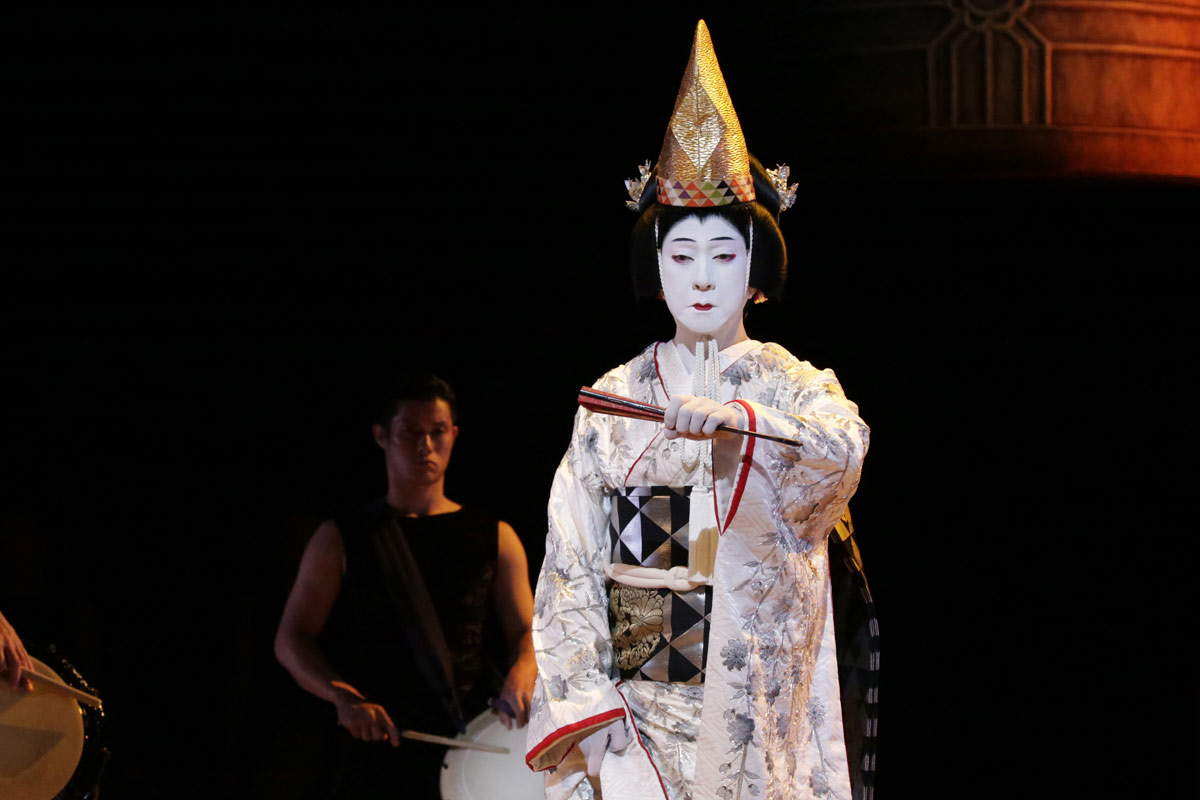 |
| BandÅ TamasaburÅ in Yugen, out September 27, 2019 in theaters across Japan the special kabuki cinema edition. © Takashi Okamoto |
Démos (Paris Philharmonic, France). Winners of the 2019 Praemium Imperiale Scholarship for Young Artists.
Démos is a music education program run by the Paris Philharmonic. Since its inception in 2010, it has been bringing children between the ages of seven and 12 years old who live in underserved places or in rural areas to music: areas where classical music is traditionally not promoted.
The organization not only lends the children musical instruments, but also gives lessons for up to four hours a week for three years, all free of charge. Two professional musicians and a social worker work together to teach groups of fifteen children. Their goal is not only to provide skills in music, but also to care for them emotionally and foster their personal development. At the end of this period, all instruments are donated to children who wish to continue studying music.
Once a month, seven groups join together to form a 105-piece orchestra, and annually these orchestras hold concerts in local concert halls. They also perform an annual concert at the end of June at the Paris Philharmonic.
By initiating this project, the General Director of the Paris Philharmonic, Laurent Bayle, wanted to promote Démos’ presence in the community of children “on the margins,” less favored than others. That is why the Démos program aspires to gradually cover the entire territory.
Nearly 4,000 children across the country currently participate in the Démos program; there are 38 Démos orchestras. Démos’s goal for the future is to increase the number of orchestras to 60 by 2022.
The Démos program is based on the pedagogy developed, since 1995, by the teaching teams of the Cité de la musique and enriched by other experiments conducted around the world, such as the London Symphony Orchestra’s “Take A Bow” or El Sistema in Venezuela.
“We set up Démos,” explains Laurent Bayle, “because it is important for us to establish a relationship with children living in deprived areas. The El Sistema project has shown us that teaching music can bring all kinds of improvements in education. We think it is very important how music is transmitted from teachers to children.”
Démos’ popularity has grown thanks to his godfather, Lilian Thuram, the famous soccer player whose personality is in perfect harmony with his spirit. Thuram holds the record of call-ups to the French national soccer team and was world champion in 1998. In addition, Démos inspired the highly successful film La Melodie, directed by Rachid Hami in 2017.
After studying with the Démos program for three years, 50 percent of the graduates continue to study music or be in contact with classical music in one way or another. The annual operating cost of the program is about 8 million euros. One third of the budget is provided by the French government, one third comes from the private sector, and one third from local governments.
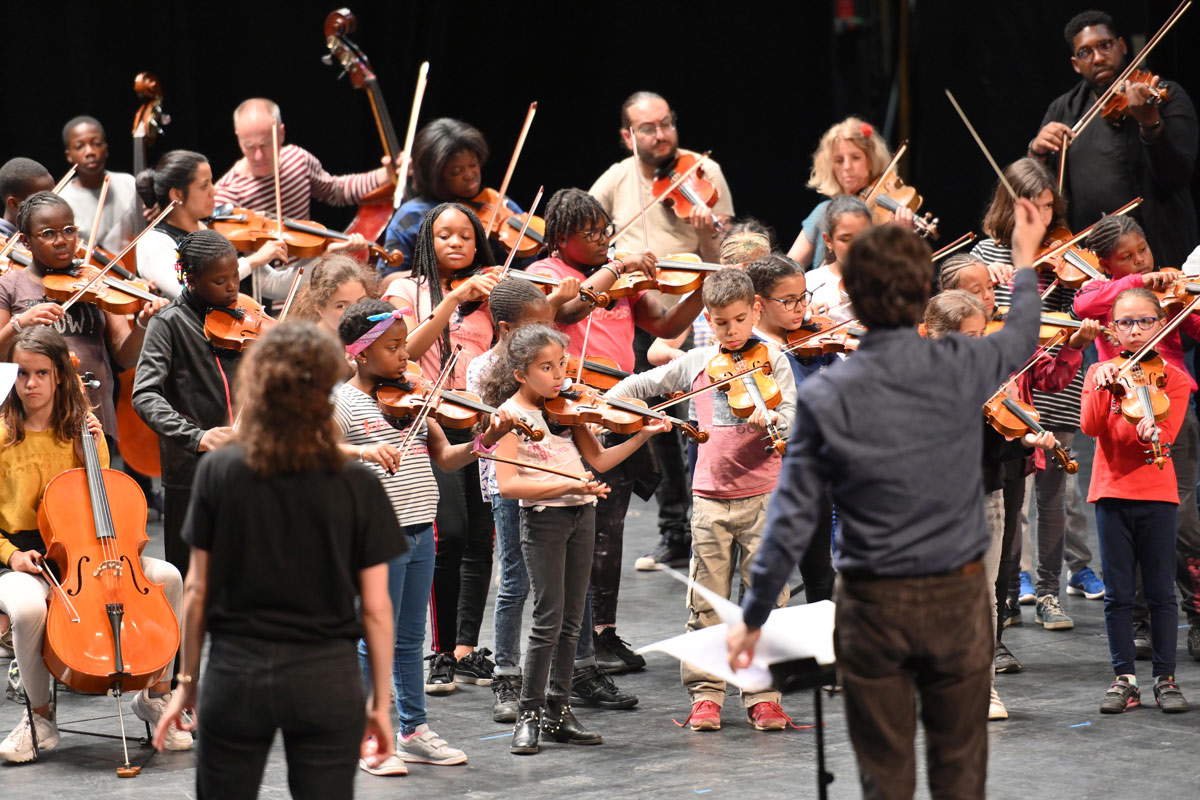 |
| Children during rehearsals at the Opéra de Massy in the suburbs of Paris, 2019 © The Japan Art Association / The Sankei Shimbun |
Pictured below: WIlliam Kentridge, Mona Hatoum, Tod Williams and Billie Tsien, Anne-Sophie Mutter, BandÅ TamasaburÅ. Ph. Credits © The Japan Art Association / The Sankei Shimbun
 |
| From Kentridge to Anne-Sophie Mutter, a look at the winners of the 2019 Praemium Imperiale, the Nobel Prize for Art |
Warning: the translation into English of the original Italian article was created using automatic tools. We undertake to review all articles, but we do not guarantee the total absence of inaccuracies in the translation due to the program. You can find the original by clicking on the ITA button. If you find any mistake,please contact us.